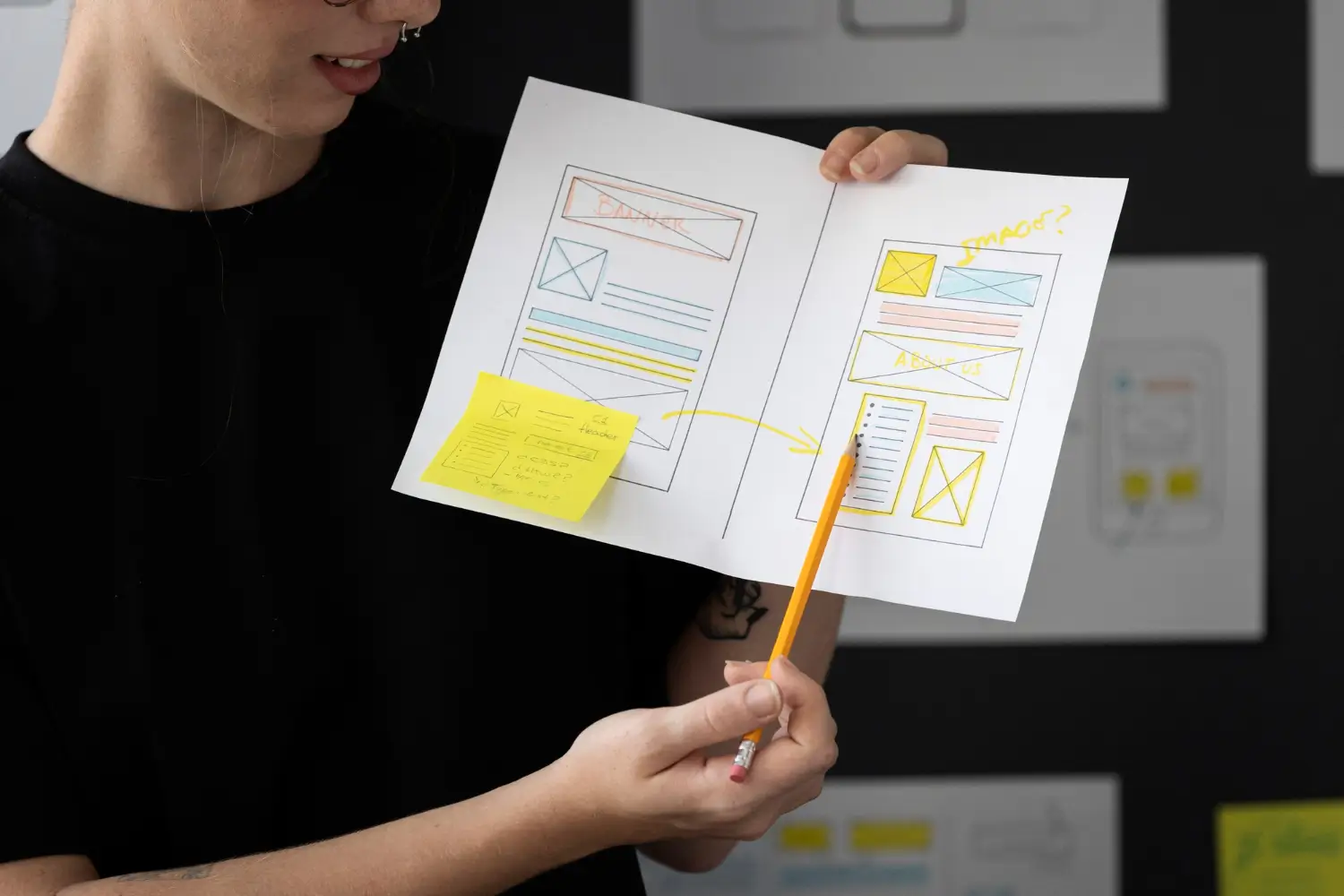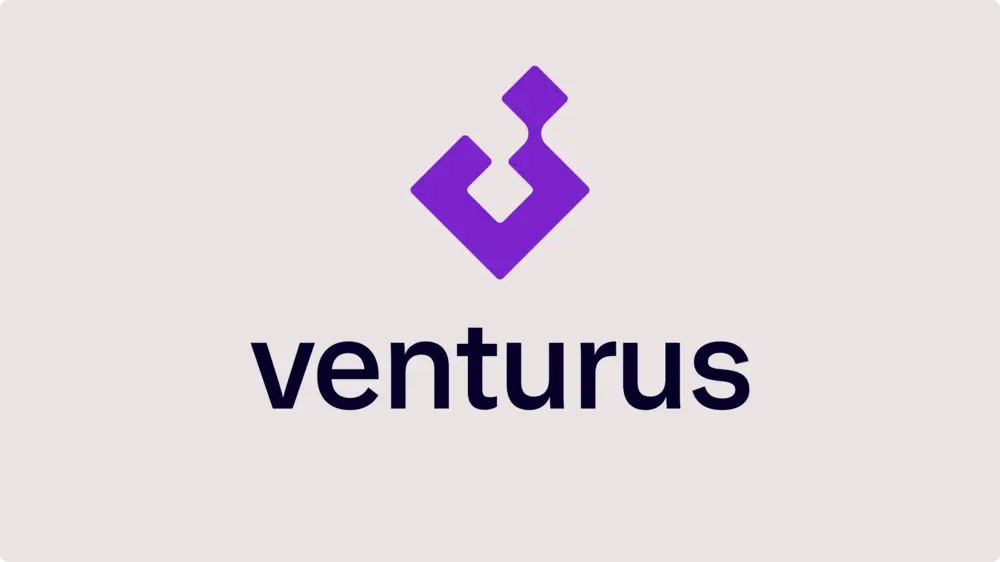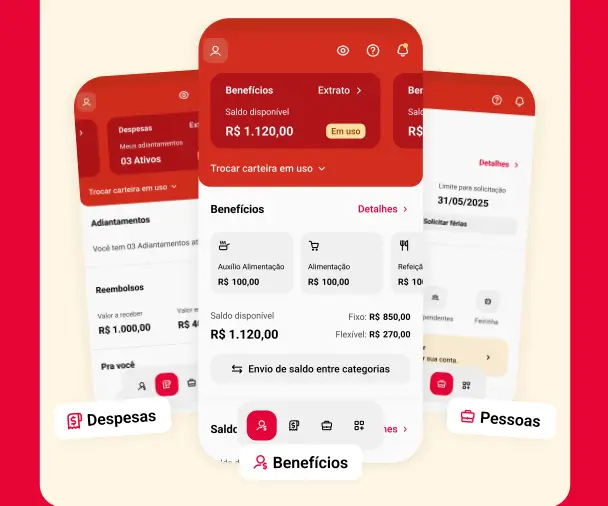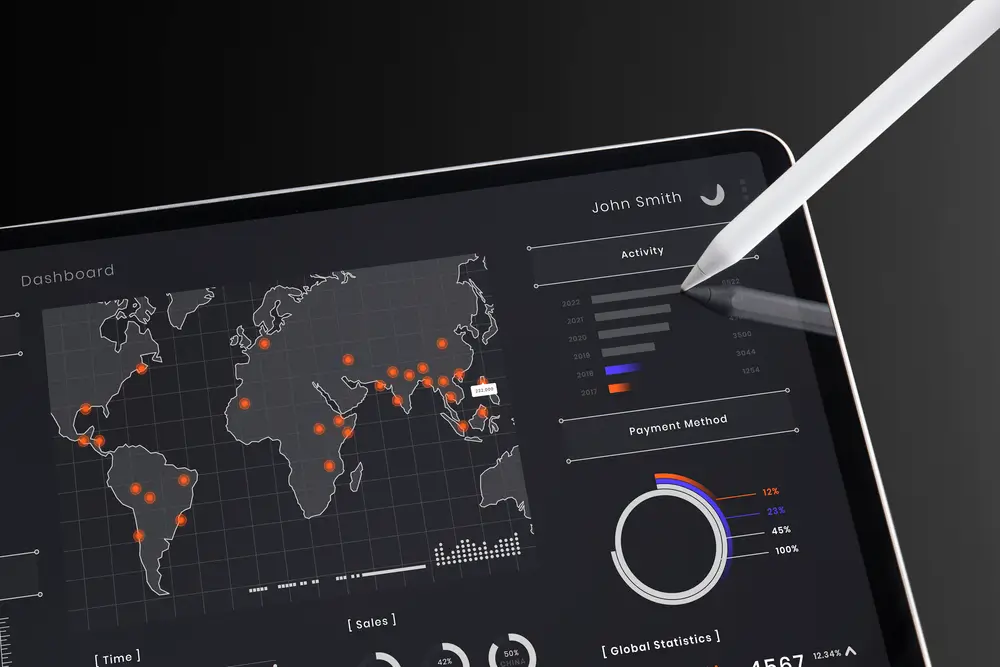Visual consistency and accessibility are two essential pillars in digital product development. But how can companies ensure these requirements are met at scale, without compromising quality?
That was exactly the challenge Thales — a multinational operating in sectors like Defense, Aerospace, and Cybersecurity — brought to Venturus. The goal was to explore the potential of Artificial Intelligence in automating interface validation.
In this article, you'll see how we turned an operational pain point into a high-impact Proof of Concept (PoC), using AI and computer vision to automatically check compliance with Design Systems and accessibility standards.
Validating at Scale: Why It’s So Challenging

In large enterprises like Thales, visual interfaces must follow strict branding and design rules. These guidelines — known as Design Systems — help ensure consistency across products and support scalable, high-quality development.
At the same time, global companies face growing pressure to make their digital products compliant with international accessibility standards, such as the Web Content Accessibility Guidelines (WCAG).
The problem? These validations are often done manually — they’re repetitive, time-consuming, and prone to human error. Reviewing each visual element — colors, fonts, spacing, contrast, buttons — takes valuable time and can lead to costly rework if issues are found too late in the development process.
Thales needed a faster, more reliable way to make sure their interfaces followed both their internal Design System and global accessibility guidelines.
How AI and Computer Vision Ensure Compliance and Accessibility
With this challenge in hand, Venturus developed a Proof of Concept using computer vision and AI to detect visual inconsistencies in user interfaces automatically.
The solution was designed to be intuitive. Users simply upload an image of the interface they want to validate — this could be a screen from an app, a web page, or even a prototype. Then, they select the type of analysis:
- Design System compliance
- Accessibility validation
- Or both at the same time
The system processes the image and generates a visual report, highlighting elements in green that meet the criteria and marking in yellow those that need adjustment.
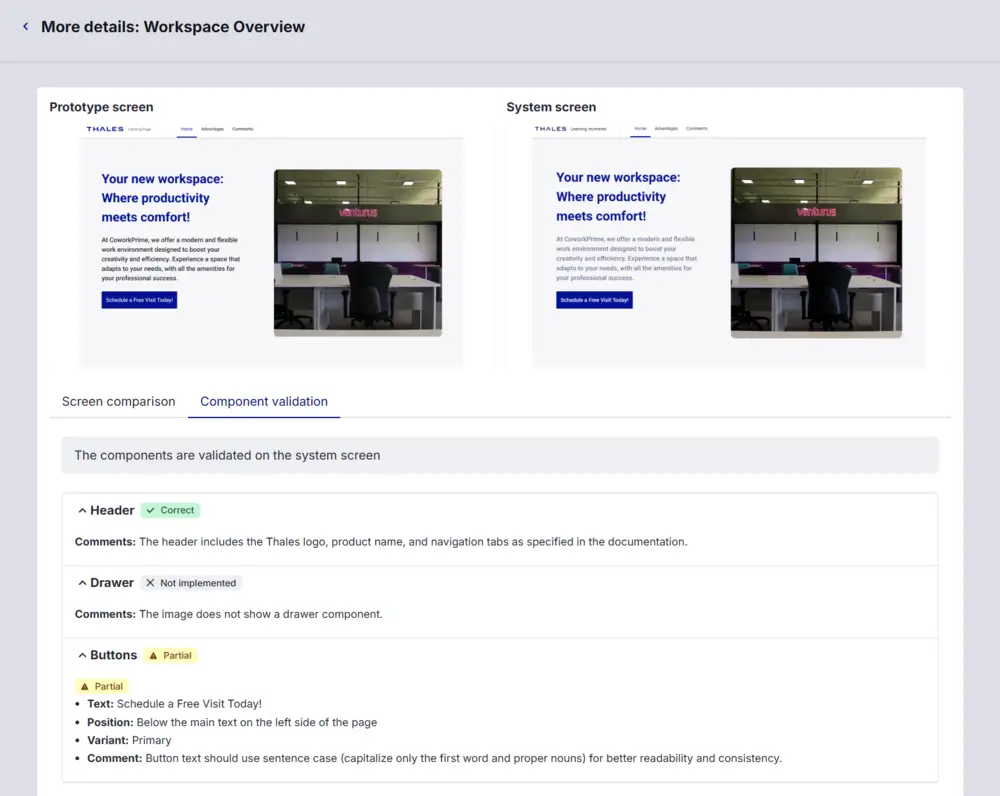
The report also outlines which specific criteria weren’t met, giving design and development teams clear guidance on what needs to be fixed. This approach makes it possible to validate entire screens in seconds, achieving a level of consistency that would be hard to replicate manually at scale.
Outcomes and Insights
Even as a Proof of Concept, the project delivered valuable results and paved the way for new approaches to interface validation. Key benefits included:
- Faster validation, enabling teams to test more screens in less time
- Fewer human errors, with more objective and consistent analysis
- Clearer insights, thanks to visual reports that are easy to interpret
- Accessibility coverage, validating 3 key criteria to support more inclusive digital experiences
The initiative also demonstrated how AI can become a strategic ally in interface quality assurance — not replacing the creative work of designers, but adding a technical validation layer that helps uphold standards, even in fast-paced, distributed teams.
A New Approach to Digital Product Quality
This case illustrates how AI can be applied to less obvious stages of software development — like interface design and visual compliance checks. As digital products grow increasingly complex, using tools that automate repetitive tasks and enhance team capabilities is becoming more of a strategic necessity than a nice-to-have.
AI in Action: Going Beyond Experimentation
These are exactly the kinds of challenges Venturus was built to solve. We turn real-world problems into customized, scalable technology solutions — combining deep expertise in AI, computer vision, software development, and more.
Curious how we can help your company innovate? Talk with our experts!
